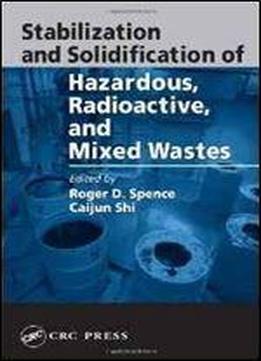
Stabilization And Solidification Of Hazardous, Radioactive, And Mixed Wastes
by Roger D. Spence /
2004 / English / PDF
7 MB Download
The development of stabilization and solidification techniques in the field of waste treatment reflects the efforts to better protect human health and the environment with modern advances in materials and technology.
Stabilization and Solidification of Hazardous, Radioactive, and Mixed Wastes provides comprehensive information including case studies, selection criteria, and regulatory considerations on waste characterization, contaminant transport and leachability, testing methods for stabilized waste forms, and the interactions between contaminants and stabilizing components.
The book describes various systems based on cement technology that are used for stabilization and solidification of wastes. It demonstrates how to design a stabilized waste form, including the use of statistical techniques for generating response surface models for large, complicated applications. It provides guidelines for the selection of bonding materials, such as hydraulic cements, polymers, and hydroceramics, and discusses several additives and sorbents used to enhance immobilization, binder properties, and contaminant stabilization. The book portrays the transport mechanisms of contaminants in treated wastes and how to predict the transport of contaminants with various mathematical models. Following a discussion of waste types, principles, and properties of cemented waste forms, such as microstructure and durability, it outlines the test methods used to evaluate them.











